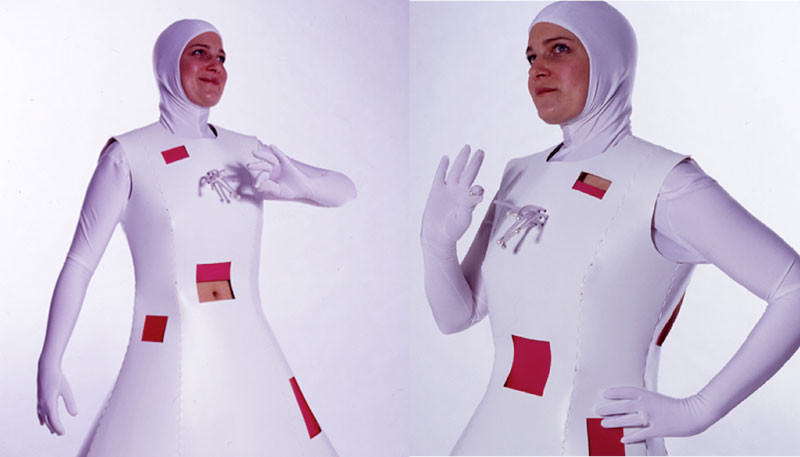
Dress is a shop that sells the possibility to touch human skin, in a context where it can’t be misunderstood or misconstrued. Each pearl protruding from the bodice, when pulled, opens up one of the rose coloured panels on the dress to reveal a small parcel of skin which you are invited to touch gently, momentarily, with your fingertips.
Human contact is so often neglected. Dress reawakens your awareness to the simple beauty and sensuality of touch with the feel of another person’s skin.
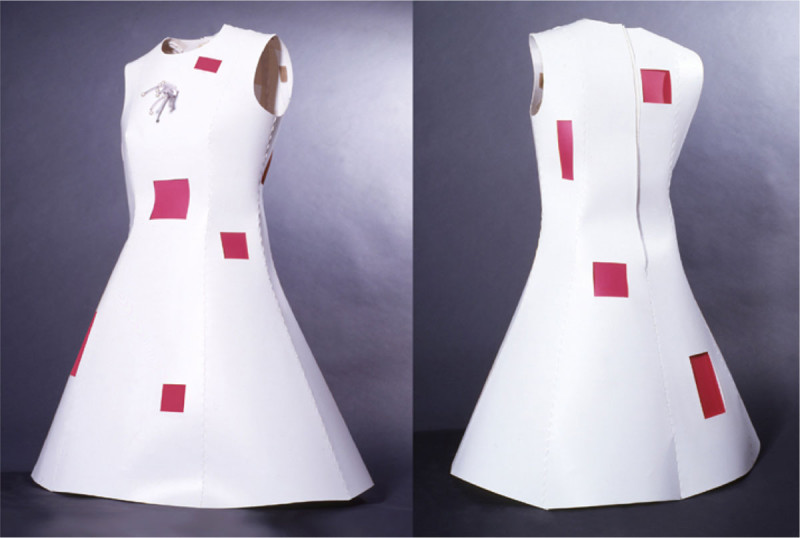
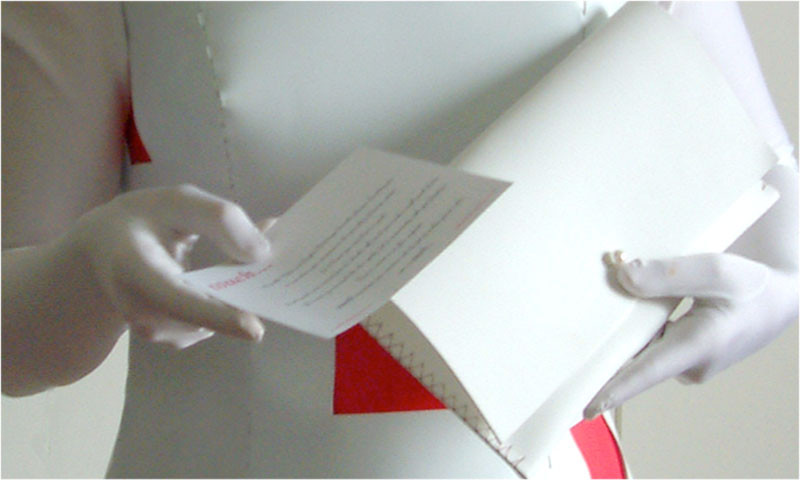
“Danielle Wilde and Sophie Birkmayer have the pleasure of inviting you to reawaken your awareness to the sensuality of human contact. For 2 euros you may choose a pearl. Each pearl, one enticed from its sheath, will reveal to your touch a small parcel of skin. We invite you to touch this skin gently, momentarily, with your fingertips. Human contact is so often neglected. Touch reawakens your awareness with the feel of another person’s skin. Come to us and touch.”
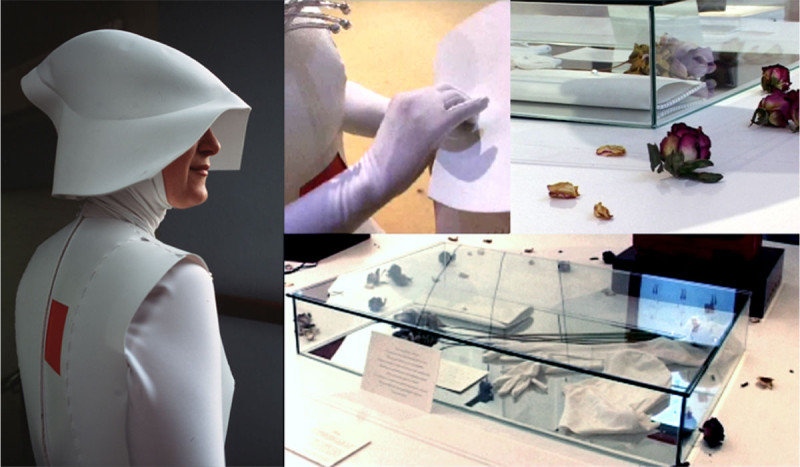

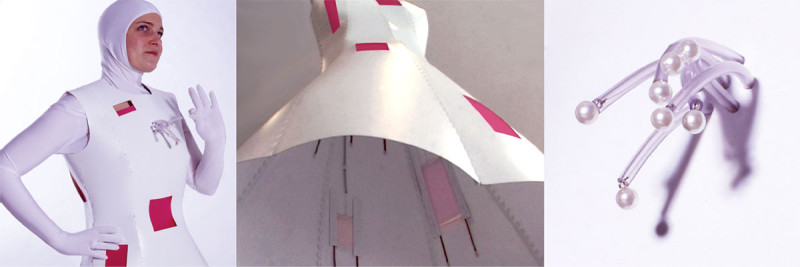
Discussion
Dress is a polypropylene dress fitted with small “counters” which offer glimpses of human flesh for “sale”. The “sales-person” wears the “body-shop” and wanders through public domains inviting people to pull on a “pearl” of their choice and thereby expose a parcel of skin that they are to caress momentarily with their fingertips.
The aim with Dress is to explore the fundamental human need for touch by creating a “shop” which sells the possibility to touch human skin. The resulting “store” allows us to challenge the “customer’s” relationship to touch by having them confront their personal and cultural inhibitions to touching another person in public. Exposing naked flesh to the touch of a paying “customer” also brings attention to the conflation of erotic and consumerist values so prevalent in our culture.
Dress was created out of polypropylene, a semi-rigid plastic, and designed as an iconic abstraction of a dress. The dress and its accessories completely cover the wearer, leaving only the face exposed. When a customer chooses and pulls on a “pearl” protruding from the centre of the chest of the dress, one of ten windows or “sales counters” opens to expose a piece of flesh.
The rigidity of the form and the almost total absence of visibility of skin create an “armor” which serves both to hide and to shield the wearer. This accentuates the nature of the offering – the “parcels” of naked flesh – whilst highlighting the issues of vulnerability, exposure and morality inherent in the proposed transaction. The colour scheme for Dress was chosen to conform with “norms of respectability”. With the exception of the “sales-counters” and the transparent plastic tubing from which the “pearl”s protrude, Dress and its accessories (satin glove-sleeves and “balaclava”, stockings, sandals, and clutch-bag) are all white and adhere in design and form to the perceived conventions of purity, chastity and good taste.
Dress is about touching flesh and our relationship to touch in the modern world. All materials used in Dress are man-made, so plastics, foams, lycra and polymers stand between the wearer and physical contact – an artificial barrier which prevents natural, unaffected, even accidental touch.
Dress has been shown at Salone Satellite, the Young Designers’ Salon at Salone Internazionale di Mobile 2002 – Milan’s International Furniture and Design Fair. It has also been shown at an Interaction Design Affiliate’s Day Conference at the RCA, London and Show 2, 2003 – the graduate exhibition at the RCA. Dress was created with the collaboration of Sophie Birkmayer (RCA Design Products).
The Performance in Milan was realised with the collaboration of Roger Ibars (RCA Interaction Design), and the trip to Milan made possible with the generous support of Professor Irene McAra McWilliam and the Department of Interaction Design, RCA.